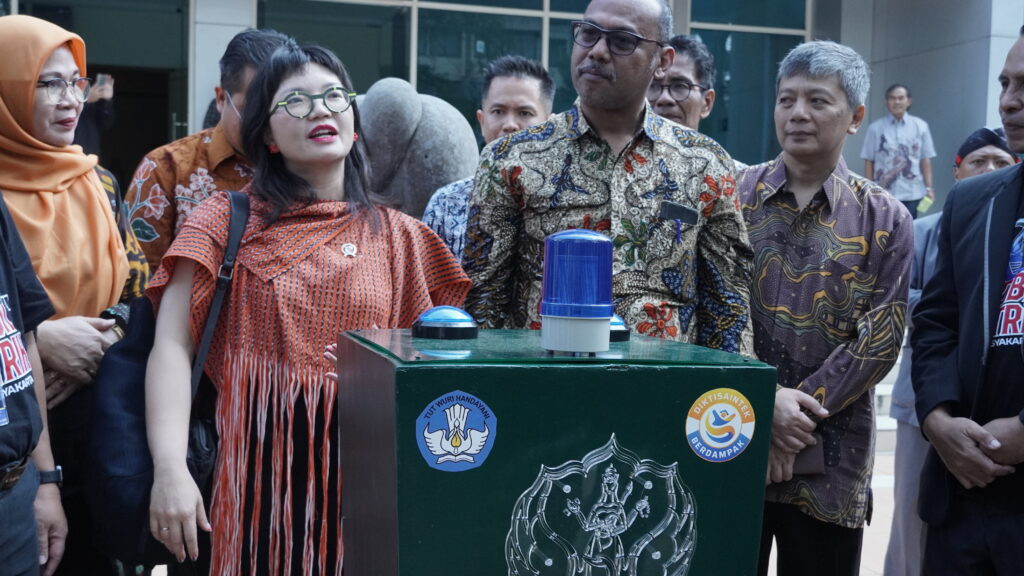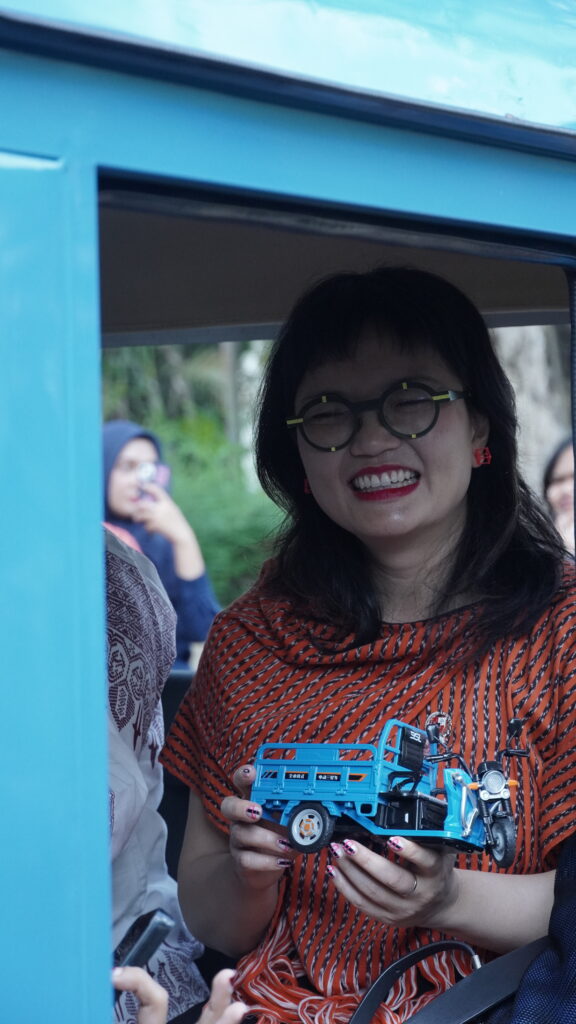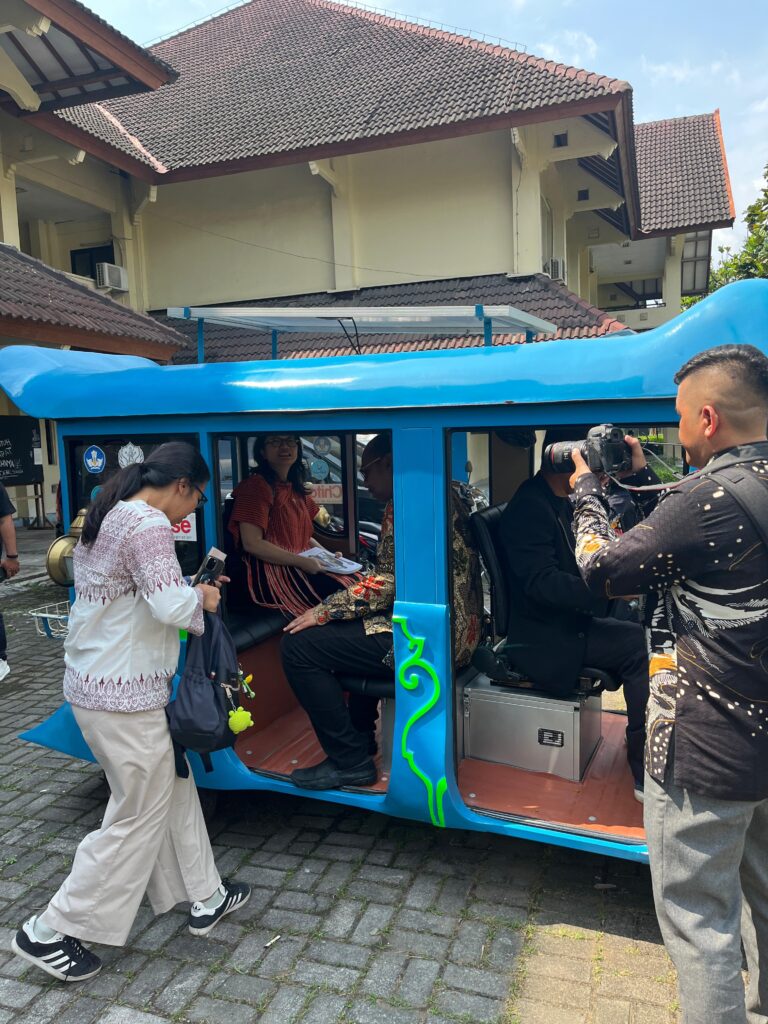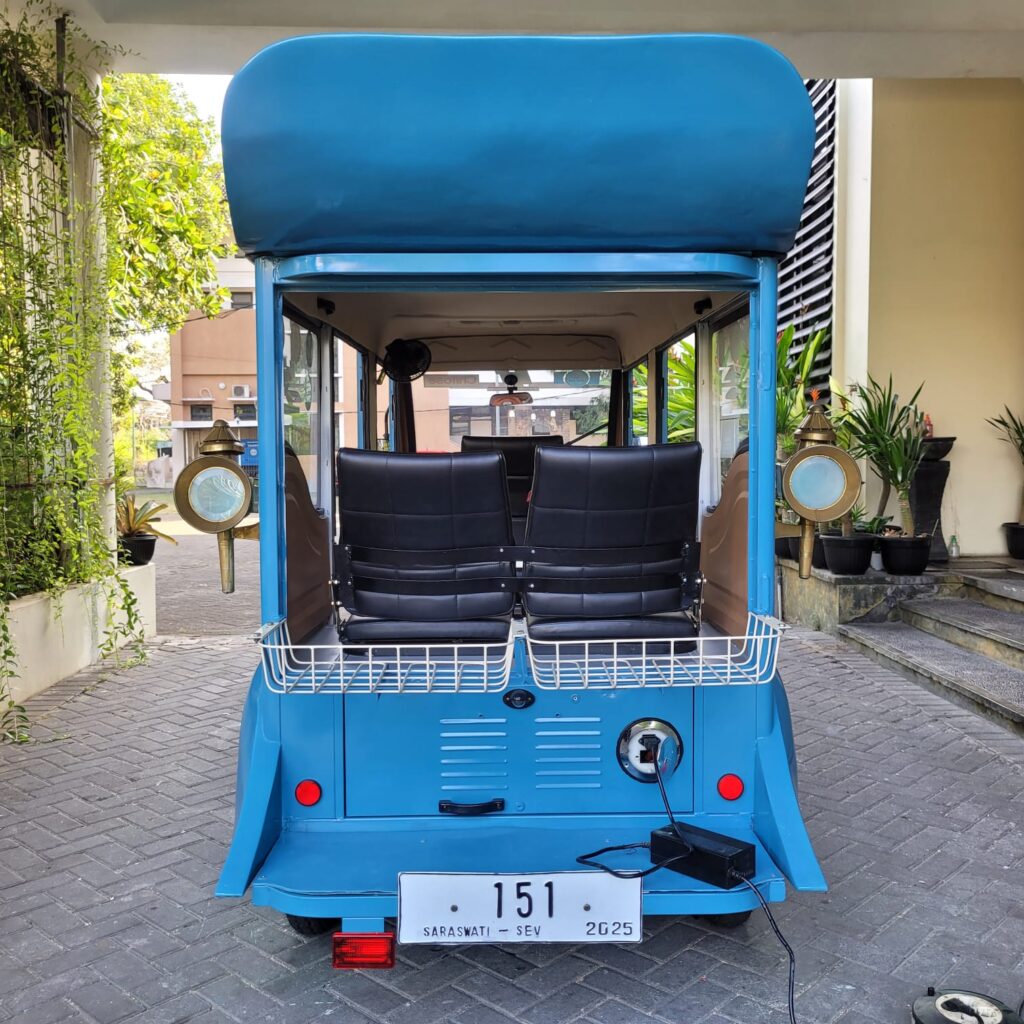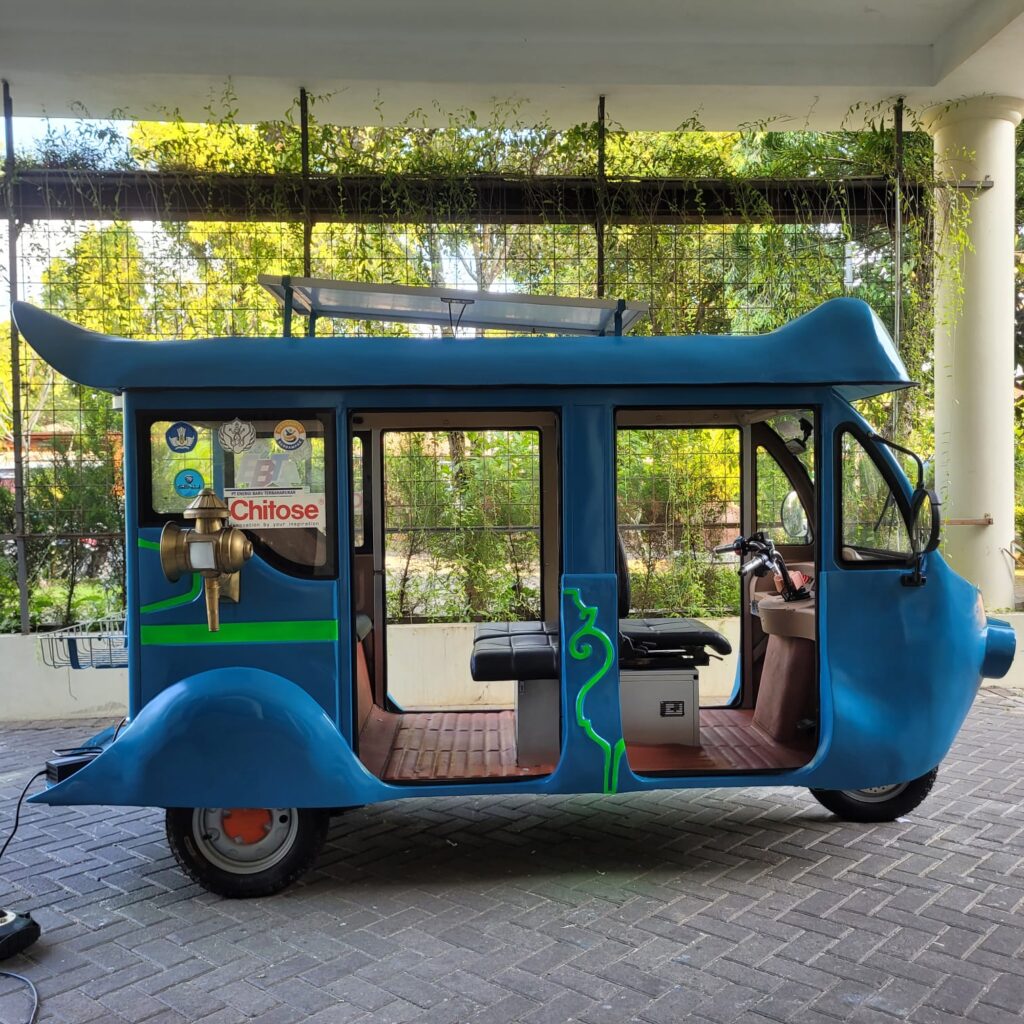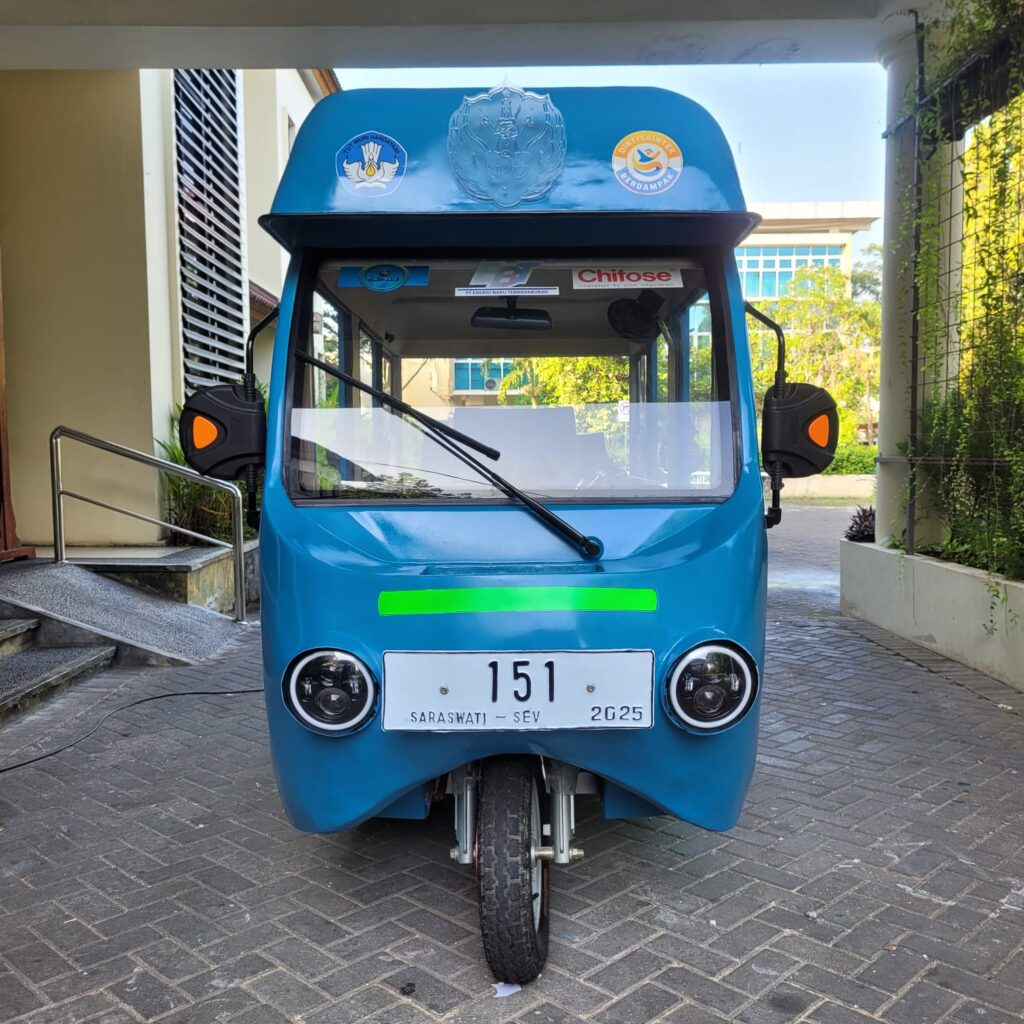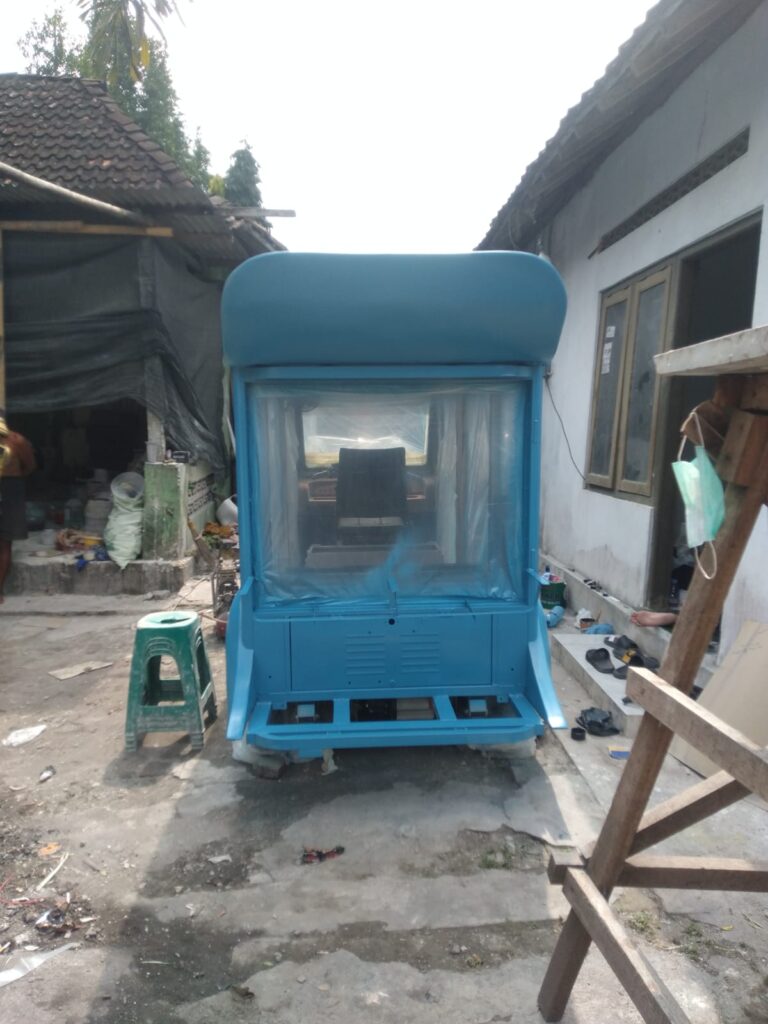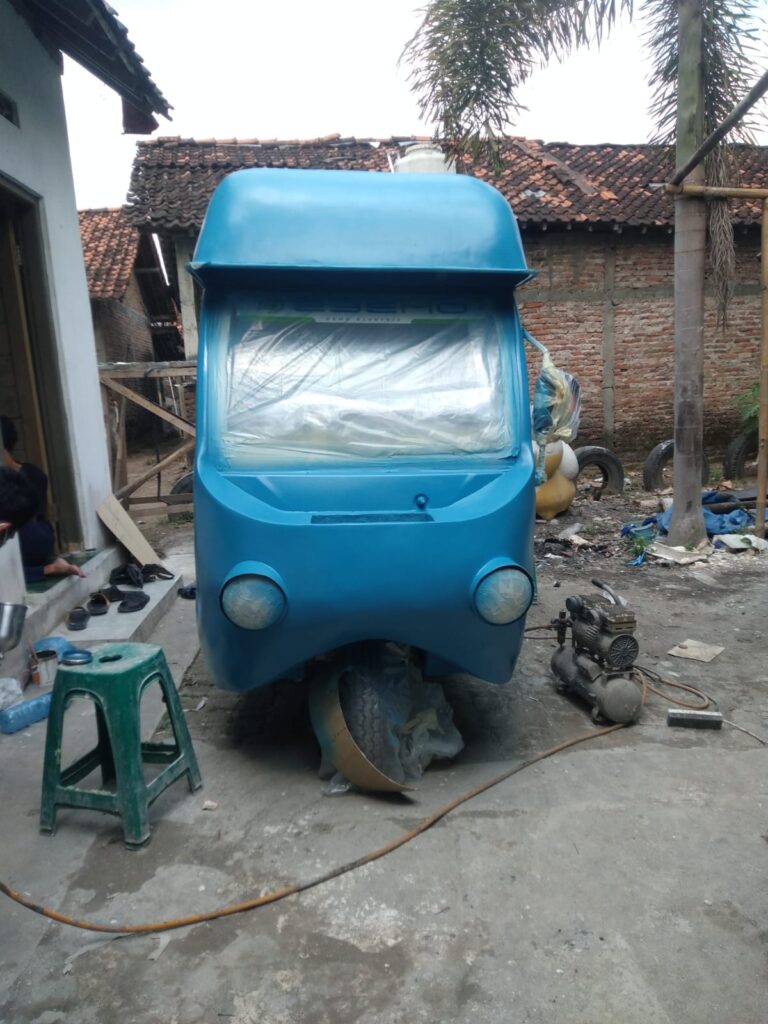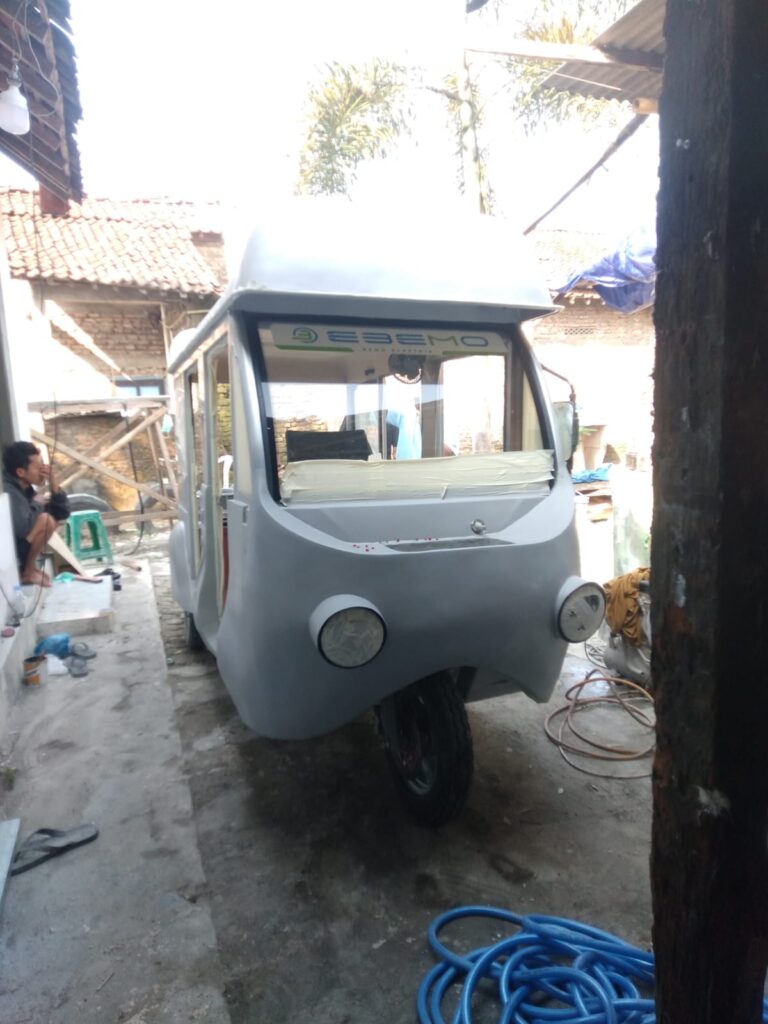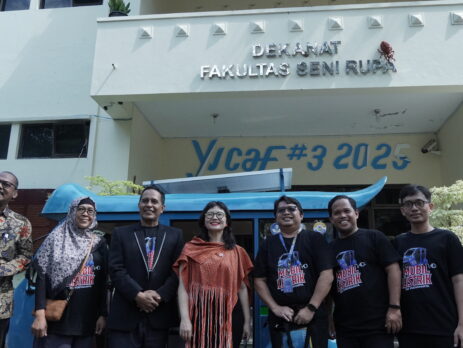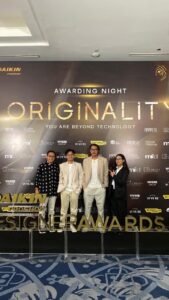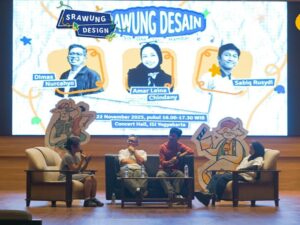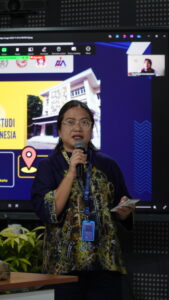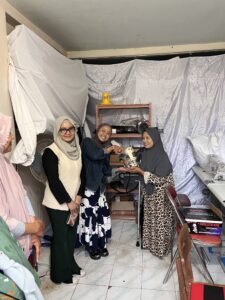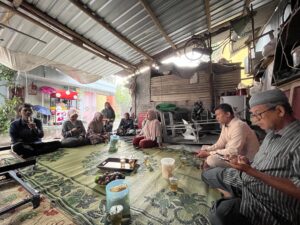Yogyakarta, July 8, 2025 Institut Seni Indonesia Yogyakarta through the Faculty of Fine Arts and Design officially launched the Solar Electric Motor "Saraswati SEV (Solar Electric Vehicle)" an innovative work that combines art, design and environmentally friendly technology. This project was initiated and developed by a team of FSRD lecturers as a form of real contribution from the art world in answering the challenges of sustainable future mobility.
The event was attended and inaugurated by the Deputy Minister of Higher Education, Science and Technology who symbolized the launch by pressing the inauguration button on a green podium that had been equipped with the logos of the sponsors. This podium faces directly towards the Solar Electric Vehicle, as the main point of the launch procession. After the official launch, Wamendiktisaintek tried this vehicle directly by driving around the ISI Yogyakarta campus area, crossing the FSRD, PSP, FSMR, student dormitory, and returning to the Creative Hub ISI Yogyakarta as the final point.
Development Solar Electric Vehicle This is the result of collaboration across study programs, which are members of the Task Force Team. Solar Electric Vehicle based on the Decree of the Rector of ISI Yogyakarta Number 180/IT4/HK/2025. The team is chaired by Lutse Lambert Daniel Morin, M.Sn., and consists of FSRD lecturers who are competent in the field of design and technology, such as Muhamad Sholahuddin, S.Sn., M.T., Hadiyan Yusuf Kuntoro, S.T., M.Eng., Yulyta K. Prasetyaningsih, S.T., M.T., and Dony Arsetyasomoro, S.Sn., M.Ds.
Three-wheeled motorcycle It combines electrical power and solar energy through the installation of photovoltaic panels, so that it can be used efficiently without complete reliance on conventional charging.
The meaning and shape concept of Solar Electric Vehicle taken from the meaning of the environment in Yogyakarta. One of the roof supports on Solar Electric Vehicles have ornaments Princess Mirong, This symbol is very important in Javanese culture, especially in Yogyakarta, reflecting the elegance and strength of women in society and scientific development. In the context of architecture, Putri Mirong can be interpreted as an element that enriches the aesthetics of ornamentation, especially on the pillars of a building in Yogyakarta.
Philosophical meaning of soko guru, as a pillar of support in Solar Electric VehicleThe pole, not only serves as an aesthetic ornament but also has a deep philosophical meaning. The pole on the Solar Electric Vehicle The soko guru symbolizes strength and stability, and symbolizes the connection between the physical and spiritual worlds. In the ornament design, the symbolism and aesthetics of Princess Mirong in the soko guru ornament create a dialog between feminine elegance and spirituality. This ornament not only functions as decoration, but also as an expression of the rich cultural identity of Javanese spirituality to create a visually beautiful and meaningful space.
Spark boar shape Solar Electric Vehicle from the becak shape because becak is a traditional public transportation vehicle in Yogyakarta. This design form is a concern for the appreciation of the development of traditional to modern technology in Yogyakarta. The goal is to create an environmentally friendly vehicle that maintains traditional cultural identity, while bridging technological developments from traditional to modern era. A symbol of harmony between Javanese tradition and futuristic technology. By maintaining the iconic form of becak but introducing modern features, this concept preserves cultural heritage while bringing Yogyakarta towards a smart heritage city through ISI Yogyakarta.
Rear light design Solar Electric Vehicle is one of the important elements of traditional horse-drawn carriage design, having a deep and multifaceted meaning. The meaning aspect of the andong lamp is integrated with the form and function as a safe and comfortable journey. In a cultural context, this lamp symbolizes the long-standing tradition of transportation in Yogyakarta. By maintaining the design, the andong lamp not only functions as a mode of transportation, but also as a reminder of the rich local history and culture. The andong lamp is decorated with ornaments that reflect local arts and crafts, giving it a distinctive aesthetic appeal. This shows that function and beauty can go hand in hand in the design of traditional vehicles. The andong lamp also serves as a strong element of cultural identity. With andong lamps in Solar Electric VehicleThis mode of transportation not only serves for transportation, but also provides social and economic impacts for the local community. Symbolic of the positive social and economic interactions in the community and the development of traditional technology towards modern.
Proudly, the development of Solar Electric Vehicle also involves cooperation with national industry partners namely; PT Senli, PT Energi Baru Terbaharukan, PT Chitose Internasional Tbk.
This collaboration is a tangible form of synergy between universities, industry, and creative communities in presenting applicable and impactful innovations.
"This project proves that art and design are not only about aesthetics, but can also be a concrete solution to energy and environmental issues. Collaboration with industry partners enables technology transfer and strengthens our innovation results," said Dr. Irwandi, S.Sn., M.Sn., Rector of ISI Yogyakarta who also acts as the team's patron.
Launch of Solar Electric Vehicle is expected to be a pioneer in the development of electric vehicles based on design art in the university environment, as well as opening up opportunities for wider research collaboration in the future.
Author : Lutse Lambert D.M.
